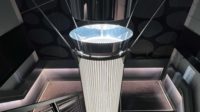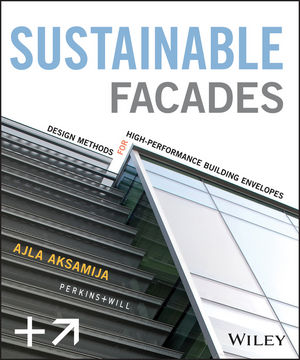Energy Biosciences Building
Sophisticated controls help keep energy use in check while supporting critical research focused on climate change.












Architects & Firms
University of California, Berkeley
The scientists and policy experts at the Energy Biosciences Institute (EBI) are tackling some of today's most urgent environmental problems, including climate change and the diminishing supply of fossil fuels. The institute's chemists, biologists, engineers, and economists represent three different public research institutions—the University of California, Berkeley (UC Berkeley); the Lawrence Berkeley National Laboratory; and the University of Illinois at Urbana-Champaign—as well as the energy company BP. Given the diversity of these stakeholders, it is not surprising that the project brief for EBI's $85 million, 1-year-old home at the edge of the UC Berkeley campus called for a flexible facility that would spur innovation and foster cross-pollination.
In response, designers from national architecture and engineering firm SmithGroup JJR have created an open and mostly transparent 113,000-square-foot building. Although largely daylit and designed to perform almost 20 percent better than California's stringent energy code, the five-story structure meets the demanding lighting expectations of the EBI researchers. A long and narrow bar of state-of-the-art labs is rainscreen-clad, with generously sized north-facing bay windows. Offices are enclosed in a wedge that protrudes from the building's south face and wraps one corner. This volume has a fritted glass skin that includes fixed laminated-glass sun shades for diffusing and directing sunlight.
The laboratories presented the toughest challenge to illuminate efficiently, since researchers desired 80 to 100 foot-candles on their work surfaces. Here the lighting scheme includes indirect-direct fixtures suspended from the ceiling. These photosensor-controlled pendants, each with a single T5 lamp, provide ambient light and dim in response to daylight's entering through the 15-foot-wide-by-11-foot-tall bay windows. And, at each lab bench, the project's lighting and daylighting consultant, Loisos + Ubbelohde, provided a low-voltage LED task light. These are manually controlled, but, to keep energy consumption in check, sensors turn the lights off when users leave their stations for extended periods.
Since no such off-the-shelf, sensor-equipped fixture was available at the time, designers devised their own, combining components from several different manufacturers. “On the surface, this solution sounds incredibly simple,” says the firm's principal, George Loisos. But in fact, creating a properly functioning auto-off task light proved surprisingly tricky. It involved development of a special shield so that the sensor would “see” only what was intended, careful placement of the infrared device so that structural elements or other objects wouldn't obstruct it, and calibration of the “gain,” or sensitivity, of the sensor so that the light wouldn't turn off while the work station was occupied.
These task lights, along with the rest of the Energy Biosciences Building's electric lighting, are part of a type of network known as a digital addressable lighting interface, or DALI for short. This network should allow the reconfiguration of the building's lighting without the need for an electrician, even though most of the devices are hard-wired. If a research area is divided into two with a new partition, for example, facility operators can connect the existing fixtures to different switches simply by reprogramming them. The need for such flexibility is more than theoretical, since the Institute has so far been funded for only a 10-year period, making it likely that the structure will house different research groups during its expected 50-year lifespan.
Interspersed throughout the building are social areas intended to encourage collaboration, facilitate informal meetings, and promote chance encounters. Among these is a glass-clad stair that connects all of the floors and has thousands of tiny LEDs hidden beneath its treads and risers. These are controlled by a combination of photosensors and a timer, which dim the stair based on the brightness of sunlight shining through a rooftop skylight and turn it off during late-night hours. Although the controls provide efficiencies, even at full power the stair pulls only three amps, says Loisos. But this vertical-circulation element is much more than an efficient ambient light source. It is a luminous sculpture.
Architect: SmithGroupJJR
Lighting/daylighting Designer: Loisos + Ubbelohde
Engineers: Gayner Engineers (m/e/p)
Owner: University of California, Berkeley
Size: 113,200 square feet (gross)
Cost: $86.5 million
Completion date: August 2012
People
Formal name of building:
Location:
Completion Date:
Gross square footage:
Total construction cost:
Owner:
Architect:
Personnel in architect's firm who should receive special credit:
Lighting + Daylighting Designer:
Personnel in Lighting Designer’s office who should receive special credit:
Interior Designer:
Engineer:
General contractor:
Photographer: |
Products
Curtain Wall:
Shading Systems/Devices:
Shading Controls:
Lighting
Energy |












